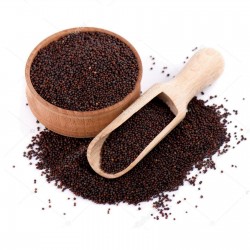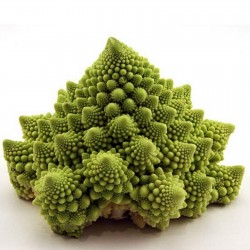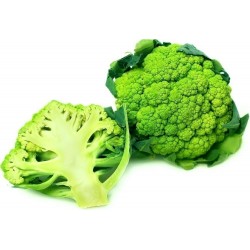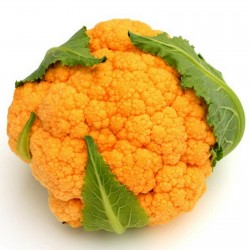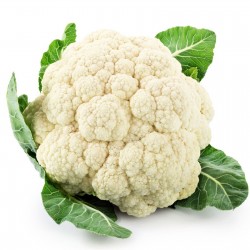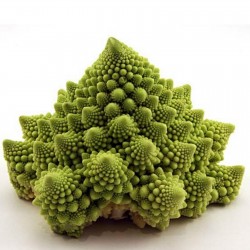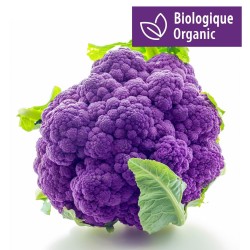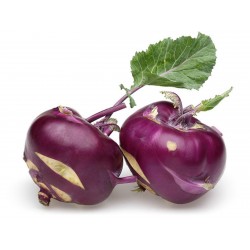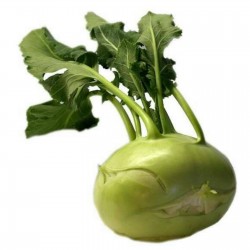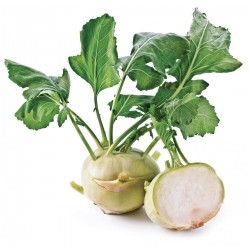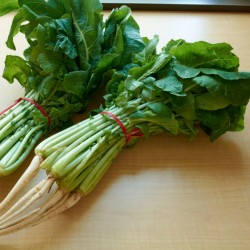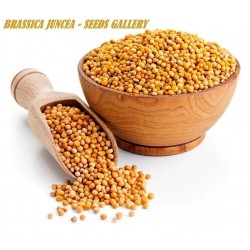
Brukev sítinovitá semínka...
Cena
1,35 €
SKU: MHS 131
Seeds Gallery Com,
5/
5
<h2><strong>Brukev sítinovitá semínka (Brassica juncea)</strong></h2>
<h2><span style="color: #ff0000;"><strong>Cena za balení 180 (1 g), 900 (5 g) semen.</strong></span></h2>
<p style="color: #202122; font-size: 14px;"><b>Brukev sítinovitá</b><span> </span>(<i>Brassica juncea</i>) je<span> </span>jednoletá<span> </span>žlutě<span> </span>kvetoucí<span> </span>rostlina,<span> </span>druh<span> </span>ze širokého<span> </span>rodu<span> </span>brukev. Dříve se rostlina pro svá<span> </span>olejnatá semena<span> </span>místně pěstovala i ve<span> </span>Střední Evropě, nyní se zde vyskytuje jen sporadicky jako<span> </span>neofyt, jako<span> </span>plevel<span> </span>občas zavlečený osobní nebo nákladní dopravou.</p>
<p style="color: #202122; font-size: 14px;">Tento<span> </span>tetraploidní<span> </span>druh pravděpodobně vznikl<span> </span>hybridizací<span> </span>mezi<span> </span>brukví řepákem<span> </span>(<i>Brassica rapa</i>) a<span> </span>brukví černou<span> </span>(<i>Brassica nigra</i>), jeho<span> </span>ploidie<span> </span>je 2n = 36.</p>
<h2 style="color: #000000; font-size: 1.5em;"><span class="mw-headline" id="Výskyt">Výskyt</span></h2>
<p>Druh pochází z míst na hranicích<span> </span>Indie<span> </span>s Čínou<span> </span>odkud se v minulosti rozšířil téměř na celý<span> </span>indický subkontinent, do<span> </span>Střední<span> </span>i<span> </span>Malé Asie,<span> </span>Japonska<span> </span>i<span> </span>Afriky. V Evropě<span> </span>se v současnosti pěstuje jen řídce na jihozápadě, zato v Asii<span> </span>je hojně rozšířenou<span> </span>plodinou. Pěstuje se také v Americe<span> </span>a jako plevelná rostlina se rozšířila téměř po celé zeměkouli včetně<span> </span>Austrálie<span> </span>a<span> </span>Oceánie.</p>
<p>Je přizpůsobivá ke kvalitě půdy a dobře se ji daří v oblastech s vyššími denními teplotami. Po<span> </span>vyklíčení<span> </span>potřebuje mladá rostlinka dostatek vody, později roste i za poměrného sucha, svým dlouhým<span> </span>kořenem<span> </span>dokáže získat vláhu z velké hloubky.</p>
<h2 style="color: #000000; font-size: 1.5em;"><span class="mw-headline" id="Popis">Popis</span></h2>
<p>Jednoletka<span> </span>s přímou<span> </span>lodyhou<span> </span>která dorůstá do výše 50 až 150 cm a roste z kořene<span> </span>sahajícího do hloubky až 1 m. Na bázi dřevnatějící lodyha se v horní třetině dělí do dlouhých větví a ve spodní části bývá řídce porostlá štětinatými<span> </span>chlupy. Její bazální i spodní lodyžní<span> </span>listy, 20 × 8 cm velké, jsou lyrovitě peřenodílné s jedním až třemi páry segmentů a se široce vejčitým segmentem koncovým. Vejčité<span> </span>čepele<span> </span>se na bázi se zužují do dlouhého<span> </span>řapíku, po obvodě jsou nepravidelně zubaté a na spodní straně bývají řídce chlupaté. Horní listy lodyhy jsou celistvé, obkopinaté až čárkovité, mají krátký řapík nebo jsou přisedlé, směrem vzhůru se zmenšují a přecházejí v listeny<span> </span>květenství. Variabilita tvarů bazálních i lodyžních listů je u tohoto druhu velmi silná a proto bývá u brukve sítinovité popisováno množství nižších<span> </span>taxonů.</p>
<p>Čtyřčetné<span> </span>oboupohlavné<span> </span>květy<span> </span>na<span> </span>stopkách<span> </span>mají podlouhlé<span> </span>kališní lístky<span> </span>o délce 4 až 6 mm. Vejčité až obvejčité žluté<span> </span>korunní lístky, 8 až 11 mm dlouhé, mají asi 4 mm velký nehtík a na vrcholu jsou obvykle okrouhlé nebo mají plytký zářez. Šest čtyřmocných<span> </span>tyčinek<span> </span>dlouhých 4 až 7 mm nese podlouhlé<span> </span>prašníky. Květy bývají ze dvou třetin<span> </span>opyleny<span> </span>samosprašně<span> </span>(lepkavý<span> </span>pyl<span> </span>je těžký a na velkou vzdálenost nedoletí) a zbytek je opylován létajícím<span> </span>hmyzem<span> </span>kterému rostlina poskytuje hodně pylu i<span> </span>nektaru.</p>
<p>Plody<span> </span>jsou 3 až 6 cm dlouhé a 3 až 4 mm široké, válcovité nebo mírně čtyřhranné, dvoudílné<span> </span>šešule<span> </span>s kuželovitým bezsemenným vrcholem. Obsahují tmavá až světle hnědá<span> </span>semena<span> </span>mající 1 až 2 mm v průměru.</p>
<h2 style="color: #000000; font-size: 1.5em;"><span class="mw-headline" id="Význam">Význam</span></h2>
<p style="color: #202122; font-size: 14px;">Semena brukve sítinovité obsahují 30 až 40 %<span> </span>oleje<span> </span>se silnou hořčičnou<span> </span>silicí<span> </span>který se obvykle používá při výrobě „ostřejších“<span> </span>hořčic; pro snadnější pěstování vytlačuje tento druh původně užívanou brukev černou. V Indii je vylisovaný olej hlavním potravinářským olejem a používá se také v kosmetice<span> </span>a pro výrobu průmyslových<span> </span>maziv.</p>
<p style="color: #202122; font-size: 14px;">V asijských a afrických oblastech jsou tradičně pěstovány odrůdy brukve sítinovité s měkkými lodyhami a velkými listy s dužnatými řapíky, ty se sklízejí postupně a jedí jako syrová, vařená, smažená či konzervovaná zelenina bohatá na<span> </span>vitamín C<span> </span>a další<span> </span>minerální látky, nově se tyto způsoby konzumace šíří i v Severní Americe.</p>
<p style="color: #202122; font-size: 14px;">V evropských podmínkách se brukev sítinovitá používá ve dvou typech, jeden je tmavosemenný (nesprávně černá hořčice) a druhý žlutosemenný. Tmavosemenný má pravidelná hnědá semena s typickým síťováním na povrchu a přidává se při výrobě kremžské hořčice. Žlutosemenný má drobná, sytě žluté semena s vyšším obsahem<span> </span>silice<span> </span>a přidává se při výrobě orientálních hořčic.</p>
<p style="color: #202122; font-size: 14px;">Důležitou vlastností rostliny je schopnost odstraňovat tzv.<span> </span>fytoextrakcí<span> </span>toxické<span> </span>kovy z půdy. Jedná se o schopnost vytahovat z půdy a ve vysoké koncentraci zabudovávat ve svém<span> </span>pletivu<span> </span>kontaminanty<span> </span>Pb, Cd, Ni, Zn, Cu, Cr, Co, Hg i některé<span> </span>radionuklidy. Po dozrání se tyto rostliny sklidí a spálí nebo chemicky zpracují.</p>
<table cellspacing="0" cellpadding="0" border="1">
<tbody>
<tr>
<td colspan="2" width="100%" valign="top">
<p><span style="color: #008000;"><strong>Sowing Instructions</strong></span></p>
</td>
</tr>
<tr>
<td valign="top" nowrap="nowrap">
<p><span style="color: #008000;"><strong>Propagation:</strong></span></p>
</td>
<td valign="top">
<p><span style="color: #008000;">Seeds</span></p>
</td>
</tr>
<tr>
<td valign="top" nowrap="nowrap">
<p><span style="color: #008000;"><strong>Pretreat:</strong></span></p>
</td>
<td valign="top">
<p><span style="color: #008000;">0</span></p>
</td>
</tr>
<tr>
<td valign="top" nowrap="nowrap">
<p><span style="color: #008000;"><strong>Stratification:</strong></span></p>
</td>
<td valign="top">
<p><span style="color: #008000;">0</span></p>
</td>
</tr>
<tr>
<td valign="top" nowrap="nowrap">
<p><span style="color: #008000;"><strong>Sowing Time:</strong></span></p>
</td>
<td valign="top">
<p><span style="color: #008000;">all year round</span></p>
</td>
</tr>
<tr>
<td valign="top" nowrap="nowrap">
<p><span style="color: #008000;"><strong>Sowing Depth:</strong></span></p>
</td>
<td valign="top">
<p><span style="color: #008000;">1 - 1,5 cm</span></p>
</td>
</tr>
<tr>
<td valign="top" nowrap="nowrap">
<p><span style="color: #008000;"><strong>Sowing Mix:</strong></span></p>
</td>
<td valign="top">
<p><span style="color: #008000;">Coir or sowing mix + sand or perlite</span></p>
</td>
</tr>
<tr>
<td valign="top" nowrap="nowrap">
<p><span style="color: #008000;"><strong>Germination temperature:</strong></span></p>
</td>
<td valign="top">
<p><span style="color: #008000;">18-20 ° C</span></p>
</td>
</tr>
<tr>
<td valign="top" nowrap="nowrap">
<p><span style="color: #008000;"><strong>Location:</strong></span></p>
</td>
<td valign="top">
<p><span style="color: #008000;">bright + keep constantly moist not wet</span></p>
</td>
</tr>
<tr>
<td valign="top" nowrap="nowrap">
<p><span style="color: #008000;"><strong>Germination Time:</strong></span></p>
</td>
<td valign="top">
<p><span style="color: #008000;">1-4 weeks</span></p>
</td>
</tr>
<tr>
<td valign="top" nowrap="nowrap">
<p><span style="color: #008000;"><strong>Watering:</strong></span></p>
</td>
<td valign="top">
<p><span style="color: #008000;">Water regularly during the growing season</span></p>
</td>
</tr>
<tr>
<td valign="top" nowrap="nowrap">
<p><span style="color: #008000;"><strong> </strong></span></p>
</td>
<td valign="top">
<p><br><span style="color: #008000;"><em>Copyright © 2012 Seeds Gallery - Saatgut Galerie - Galerija semena. </em><em>All Rights Reserved.</em></span></p>
</td>
</tr>
</tbody>
</table>
<script src="//cdn.public.n1ed.com/G3OMDFLT/widgets.js"></script>
MHS 131 (1g)





